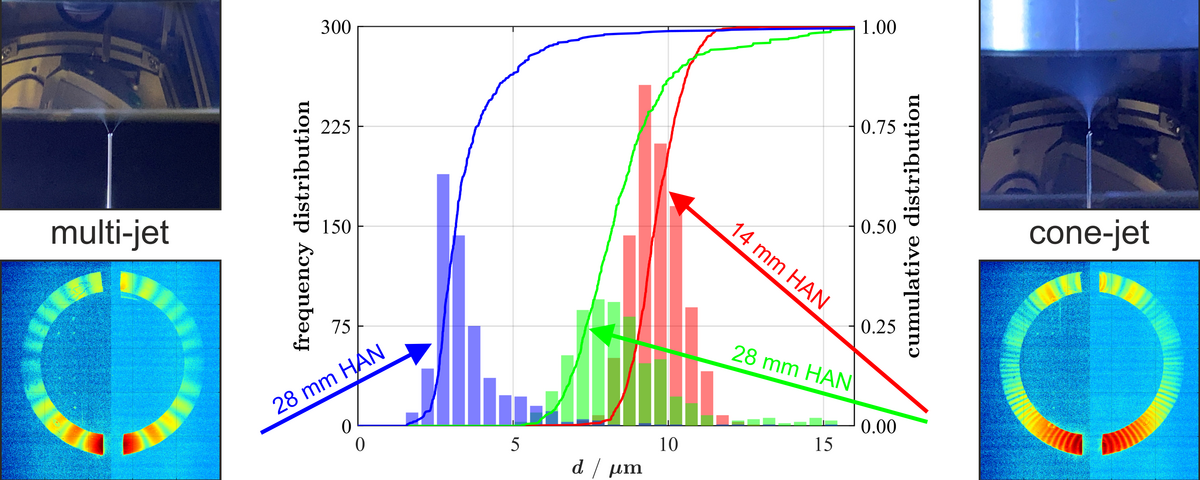Bipolar electrospray for the synthesis of defined hetero-aggregates: Process design and in situ diagnostics

Project Leader :
Prof. Dr. rer. nat. Alfred Weber
Clausthal University of Technology
Prof. Dr.-Ing. Stefan Will
Friedrich-Alexander-Universität Erlangen-Nürnberg
Aggregates of two different particle materials in contact with each other offer a wide range of applications, ranging from energy supply and environmental remediation to improved biosensors. However, a basic understanding of contact formation and its relationship to specific powder applications has not yet been achieved. The missing link is the characterization of the contact itself. Therefore, the aim of this project is to establish a process that enables the synthesis of defined hetero-contacts and to develop the corresponding in-situ characterization techniques that relate the contact properties to the synthesis conditions.
The synthesis is carried out using a bipolar electrospray (ES), which allows a wide variety of material combinations and particle morphologies and, due to electrostatic attraction, usually yields hybrid particles. Together with a subsequent online temperature treatment, this set-up allows the targeted variation of the contact type up to extended interface areas. Optical in-situ measurement techniques are developed and used to control the process, including wide-angle light scattering (WALS) to determine droplet and aggregate sizes, Exciplex-LIF to obtain detailed information about the collision process of oppositely charged droplets, UV-Vis absorption spectroscopy (AS) to determine the bandgap energy and laser-induced breakdown spectroscopy (LIBS) to determine the composition of heteroaggregates. Additional online and offline techniques, such as aerosol photoemission spectroscopy, TEM, XPS and ICP-MS are used to verify the optical techniques and to interpret the hetero-aggregate properties more precisely.
Due to the flexibility of the bipolar electrospray, different morphologies and material systems can and will be investigated, ranging from Ohm conatcts over Schottky contacts to p-n contacts. Especially the systems Ni/Ag, TiO2/Ag and CeO2/TiO2 were selected as examples, which are of special interest for the different types of hetero-contacts. In order to obtain the relationship between contact properties and functional behavior, the photocatalytic activity of TiO2/Ag in the decomposition of organic pollutants is considered as an example. The above selection is to be extended in the course of the project in coordination with other partners of the Priority Program (PP). Co-operations with different working groups of the PP have been agreed upon, which - among other aspects - serve the better understanding of the ES process by supporting modelling and of other processes by using dedicated optical methods.

